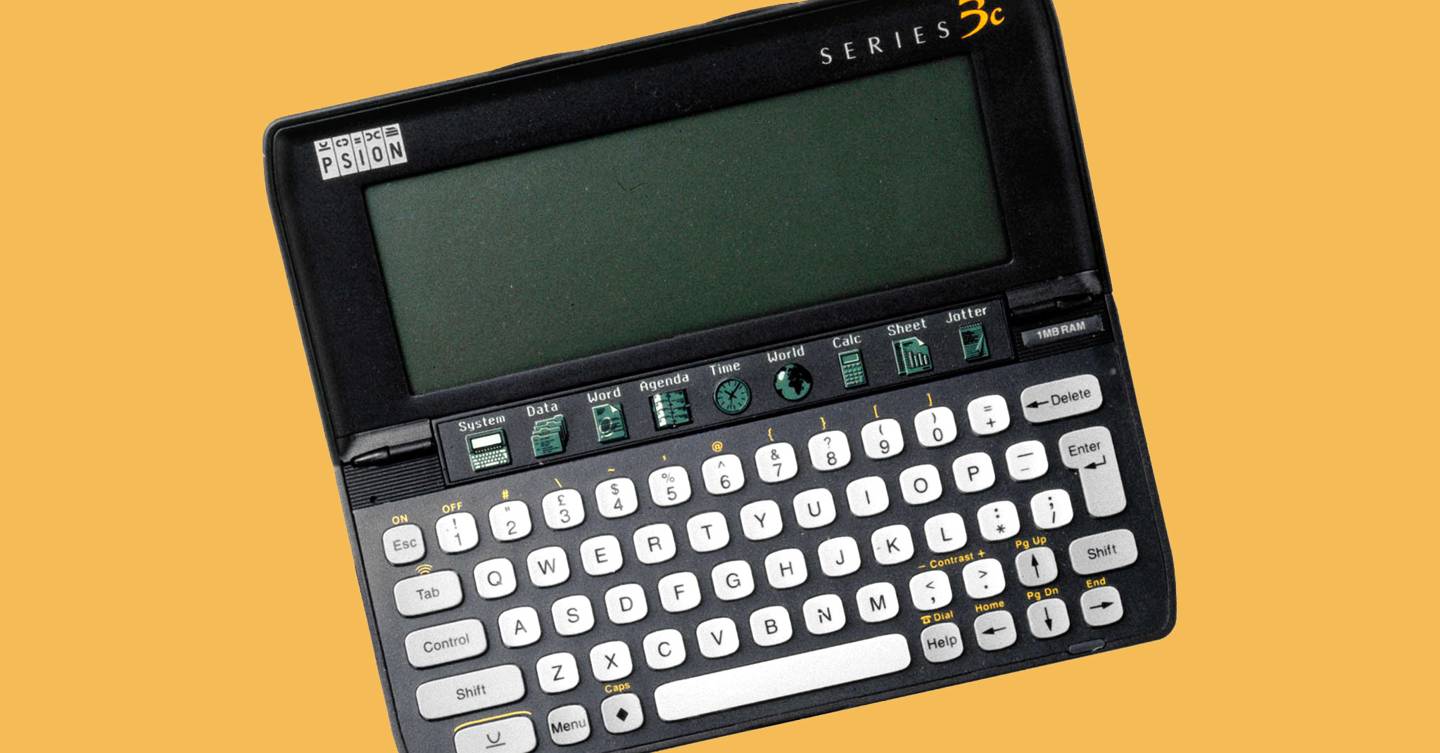http://bit.ly/2uk21gD
July 13, 2018 at 08:00AM via

Microsoft wants to bring back the PDA – a personal digital assistant as in a pocket-sized PC, rather than AI-powered virtual assistants such as Cortana or Siri.
Specifically, the company is reportedly working on Andromeda, a folding device with two screens, set to be part of its Surface family. The question on everyone’s lips: why would anyone want to bring back the PDA? The answer: ever tried getting work done on an iPhone?
At the end of June, The Verge obtained leaked internal documents describing “a new pocketable Surface device form factor that brings together innovative new hardware and software experiences to create a truly personal and versatile computing experience” that “will blur the lines between mobile and stationary computing”, with an unspecified 2018 release date.
The Andromeda name was first uncovered by WalkingCat in Windows Composable Shell code in February 2017. Further mentions of support for Andromeda OS and Factory OS Andromeda Device appeared elsewhere in Windows 10’s code and software.
Speculation based on purported teases from Microsoft Surface boss Panos Panay points at a potential partnership with LG Display to develop screens for the potential pocket PC.
It’s also widely presumed that the Surface Andromeda would feature an ARM processor, with sources close to Microsoft reporting that the company has been testing Qualcomm’s forthcoming Snapdragon 1000 chip based on the ARM Cortex-A76 CPU, with support for up to 16GB of RAM and 128GB of internal storage.
The patents we’ve seen give a good idea of the most likely physical design that Andromeda would have. Filings describe a flexible hinge to allow a pair of screens to be positioned to form laptop, tablet or self-supporting triangular configurations, complete with a mechanism to allow such a hinge to rotate.
Microsoft seems set on using a second screen as a keyboard, which may not be a particularly comfortable option if you have a lot of typing to do. As we found when using a similar system on Lenovo’s Yoga Book, with no physical keys, typing accurately and quickly is an uncomfortable challenge.
Early PDAs, like the Psion Series 3 and Apple Newton, wanted to bring the data storage and communication capabilities of a PC into a portable form. But they fell by the wayside with the development of smartphones – which in part evolved from PDAs – and increasingly high-speed mobile broadband networks.
Now, the key problem is that smartphone screens are unwieldy when it comes to getting work done on the move, especially if a lot of typing is involved, while tablets, once paired with stands and Bluetooth keyboards, are only marginally more convenient than an ultraportable laptop.
While the first pocket computers helped businesspeople keep track of contacts and expenses on the move, those features are adequately served by a smartphone. The audience for a modern PDA is as likely to include software developers, communication specialists and journalists – or anyone else who likes to work on the move and needs more features than a phablet can offer.
Microsoft
Designer Kristian Krøyer, co-CEO and founder of international design studio Swift Creatives says that, ironically enough, there’s room for improvement when it comes to making phone calls with a smartphone. “But for other types of communication it’s still the best product out there,” he argues. “The success of the smartphone is that you can have ‘all in one’. The flipside is that it’s not optimised for any of it.”
A number of companies are investigating the future of PDAs and PDA-like devices. Samsung is developing folding smartphone technology and one specialist manufacturer, Planet Computers, already has a modern PDA on the market. The Gemini is a clamshell device with a full physical keyboard, dual-boot Android and Linux operating systems, 10 ARM CPU cores and a 5.7in touchscreen.
Planet Computers CEO Dr Janko Mrsic-Flogel, says the needs of PDA users now are different to those of 20 or 30 years ago. “Society has changed. We live in a 24/7 ‘always on’ world where we need to respond to emails and work whilst travelling,” he explains. “More people now want to create content – as opposed to just consume it – and a modern PDA is the tool that enables them to do that; quicker and more effectively than your average smartphone.” Mrsic-Flogel also argues that the popularity of virtual keyboards on small devices, which take up half of a device’s screen, makes it very difficult to get stuff done. “Instead, consumers have had to rely on carrying other devices like tablets or laptops.”
Planet Computers / Simon Murrell
From a design perspective, Krøyer emphasises that a modern PDA “should be small enough to carry and big enough to be useful”. But for this to work, he continues, developers will need to rethink app design. “We need someone who dares to take risks and put changing products to market with the risk of failing,” Krøyer says. “To get to new innovations we need companies who dare to prototype in the market.”
The success or failure of Planet Computers’s Gemini may provide exactly that kind of real-world proof of concept. Initially crowdfunded, the company has shipped approximately 6,000 units to backers since February and recently opened to new orders. While impressive, such numbers are infinitesimally small to a company operating at Microsoft’s scale.
User feedback has been positive, says Mrsic-Flogel, with particularly popular features being the device’s keyboard, long battery life and “pocketability” – this, unlike an iPad, being a device that is small enough to slip into a pocket. “People want to be able to use a device on the train to work or when out for lunch and access its functions whenever they want without hassle,” he says. The most frequent feature requests for future iterations include a backlit keyboard, a second external display and the inclusion of a fingerprint reader and NFC.
Although there are plenty of Andromeda-shaped clues to be found, from patent applications to source code, Microsoft’s keeping mum about any actual release plans. Most recently, it’s emerged that Andromeda OS support won’t be going into the forthcoming major Autumn update of Windows 10, codenamed Redstone 5.
The future of phones is folding
Sources speaking to ZDNet’s Mary Jo Foley have indicated that the portable computer may have fallen victim to internal reorganisation following the departure of Windows and Devices Group chief Terry Myerson and that “there’s still no compelling reason for Microsoft to come to market with its current iteration of a small, dual-screen mobile device”.
Meanwhile, Microsoft has just released a budget tablet in the form of the Surface Go, a £301, ten-inch tablet with an optional keyboard and Surface Pen sold separately.
Andromeda isn’t the first dual-screen device Microsoft has prototyped in recent years. The Courier, cancelled in 2010, was to have been a digital journal aimed at creatives, while the folding, seven-inch Surface Mini was developed and trialled internally before being cancelled in 2014.
If, unlike its predecessors, the Andromeda project does come to fruition, Krøyer says that it would be a bold move on Microsoft’s part to stay in the market long enough to build moment among developers and customers. “It will probably never be a mass market category like the current smartphone,” he says. “But it doesn’t need to in order to be an excellent product that serves the specific needs for a segment of users. The market is so big that a niche can be big business.”

